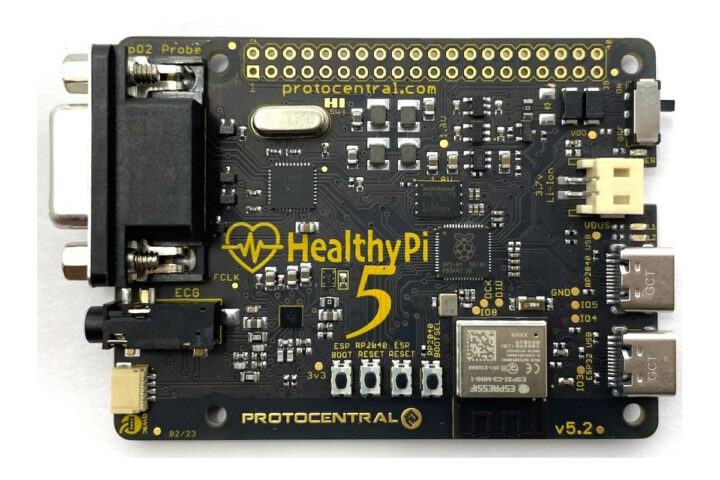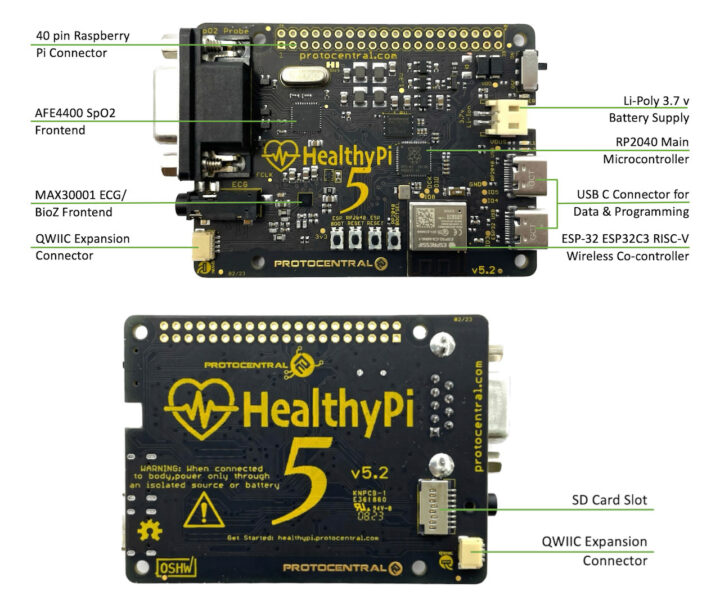HealthyPi 5 is an open-source sensor platform for biosignal acquisition based on Raspberry Pi RP2040 microcontroller and ESP32-C3 WiFi & BLE module used to capture vitals such as electrocardiogram (ECG), respiration, photoplethysmography (PPG), oxygen saturation (SpO), and body-temperature data.
It is a complete redesign of the HealthyPi v4 Raspberry Pi HAT with many of the same features. While the HealthyPi 5 also follows the Raspberry Pi HAT form factor and can be connected to a Raspberry Pi SBC to analyze the data, it can also be used as a standalone device with the processing handled by the RP2040 dual-core Cortex-M0+ microcontroller and connectivity through an ESP32-C3 wireless module, and data visualized on a 3.5-inch SPI display or a smartphone over WiFi or Bluetooth.
HealthyPi 5 specifications:
- MCU – Raspberry Pi RP2040 dual-core Arm Cortex-M0+ microcontroller @ 133 MHz with 264 KB SRAM
- Wireless Module – ESP32-C3 RISC-V module with 2.4 GHz WiFi 4 and BLE support
- Storage – MicroSD card slot
- Sensors
- MAX30001 analog front end for ECG and respiration measurement
- AFE4400 analog front end for PPG and SpO2
- MAX30205 temperature sensor via onboard Qwiic/I²C connectors
- USB
- 1x USB Type-C port for communication with a computer and programming the RP2040
- 1x USB Type-C port for programming and debugging the ESP32-C3 module
- Expansion – 40-pin Raspberry Pi HAT connector also used to connect a 3.5-inch touch color display module with 480×320 resolution
- Power supply
- Input/Charging – 5V via USB-C port
- Battery – On-board Li-Ion battery management with charging through USB
- Built-in power-path management with automatic switching between battery and USB power
- Dimensions – 75.5 x 56 x 17 mm
Protocentral also provides a carrier board for the HealthyPi 5 with the following highlights:
- Interface to HealthyPi 5 through USB port and 40-pin GPIO header
- USB power isolation (IEC 60101-1 1kV rated)
- USB data-line isolation (IEC 60601-1 5 kV rated)
- Five ESD-protected Qwiic ports for expansion
- Dimensions: 100 x 68 x 12 mm
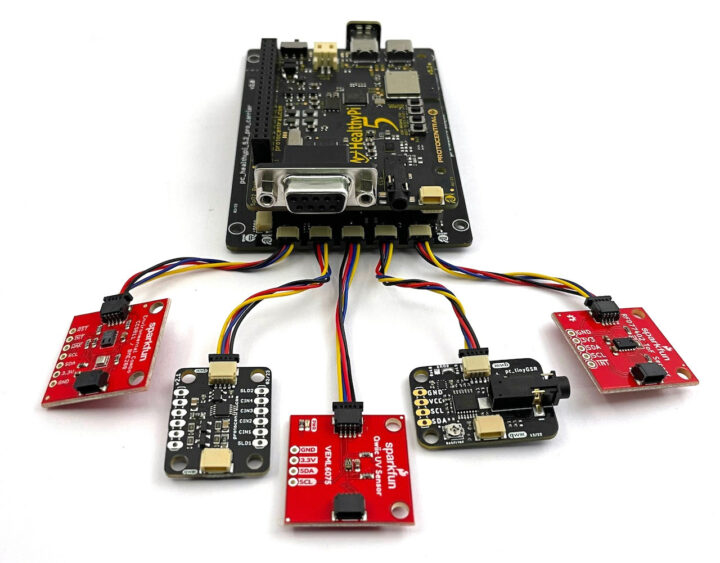
The company provides Arduino firmware and test programs for both the RP2040 and the ESP32-C3 microcontrollers on GitHub, but you could also program the platform with MicroPython or in C/C++ using the Raspberry Pi Pico SDK for the RP2040 or the ESP-IDF SDK for the ESP32-C3.
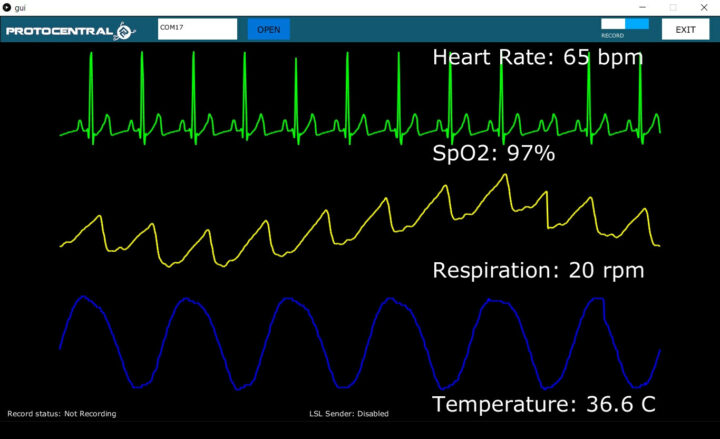
ProtoCentral also offers a desktop GUI to configure the device, receive data streamed over USB, and visualize data or record it to a file. It also supports streaming data over the local network using the Lab Streaming Layer (LSL) protocol and allows you to easily import the data into MATLAB or Python programs for example. The program is written in Processing and compiles natively for Windows, Mac, and Linux.
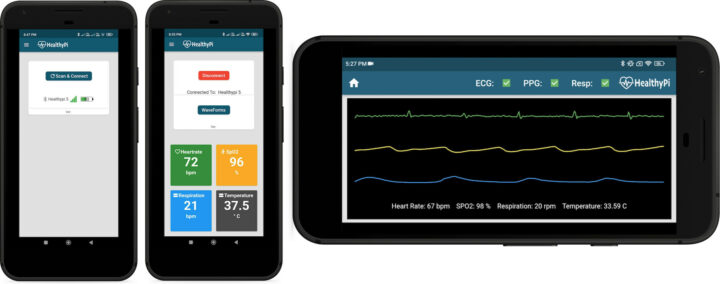
If you prefer working with mobile devices, they also developed the HealthyPi 5 mobile app using the Dart programming language and the Flutter framework for Android and iOS compatibility. The app is used to visualize the data capture over Bluetooth. The HealthyPi 5 mobile apps will eventually be available on the Google Play Store and the Apple App Store.
The EAGLE schematics and PCB layout for all PCBs, some Python scripts, and the JAR file for the desktop GUI can be found on GitHub. We’re told the source code for the desktop GUI and mobile app are on this repository, but at the time of writing, I could not find either.
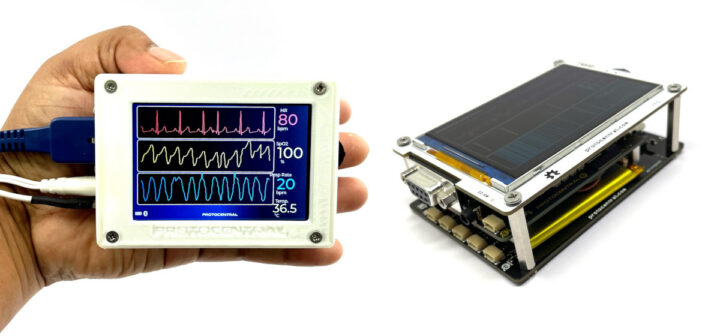
- As a standalone system with the carrier and 3.5-inch touchscreen display
- As a standalone system transmitting the data to a mobile host (smartphone, tablet…) over WiFi or Bluetooth
- As a Raspberry Pi HAT with the single board computer handling processing and display of the data
- As a USB data logger connected to a laptop or other host
The project has launched on Crowd Supply crowdfunding platform with a symbolic $1 funding target. Rewards start at $275 for the HealthyPi 5 Basic Kit with the mainboard, an ECG cable, ECG electrodes, an SpO2 probe, and a temperature-sensor cable, and you can also pledge $395 for the “HealthyPi 5 Complete Kit” with a fully assembled HealthyPi 5 mainboard, a display module, the carrier board, a 3D-printed enclosure, and a 3.7V/2000-mAh LiPo battery.

Jean-Luc started CNX Software in 2010 as a part-time endeavor, before quitting his job as a software engineering manager, and starting to write daily news, and reviews full time later in 2011.
Support CNX Software! Donate via cryptocurrencies, become a Patron on Patreon, or purchase goods on Amazon or Aliexpress


